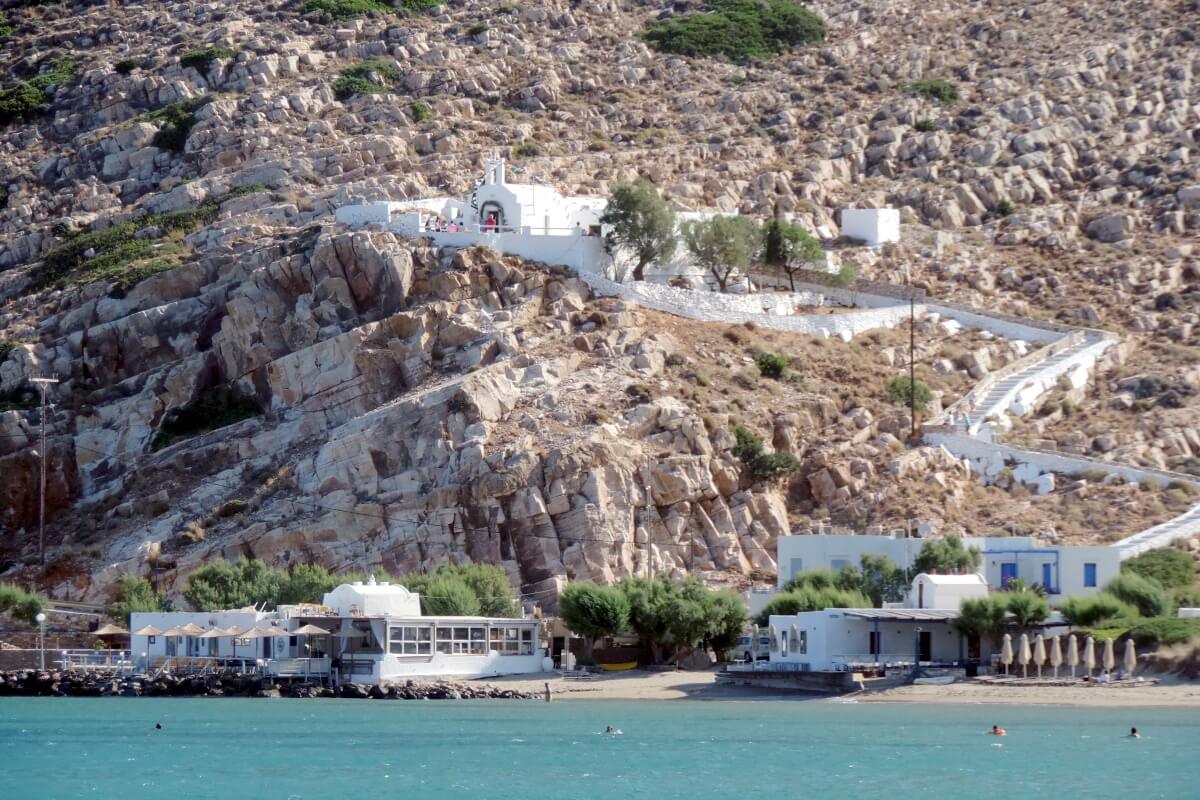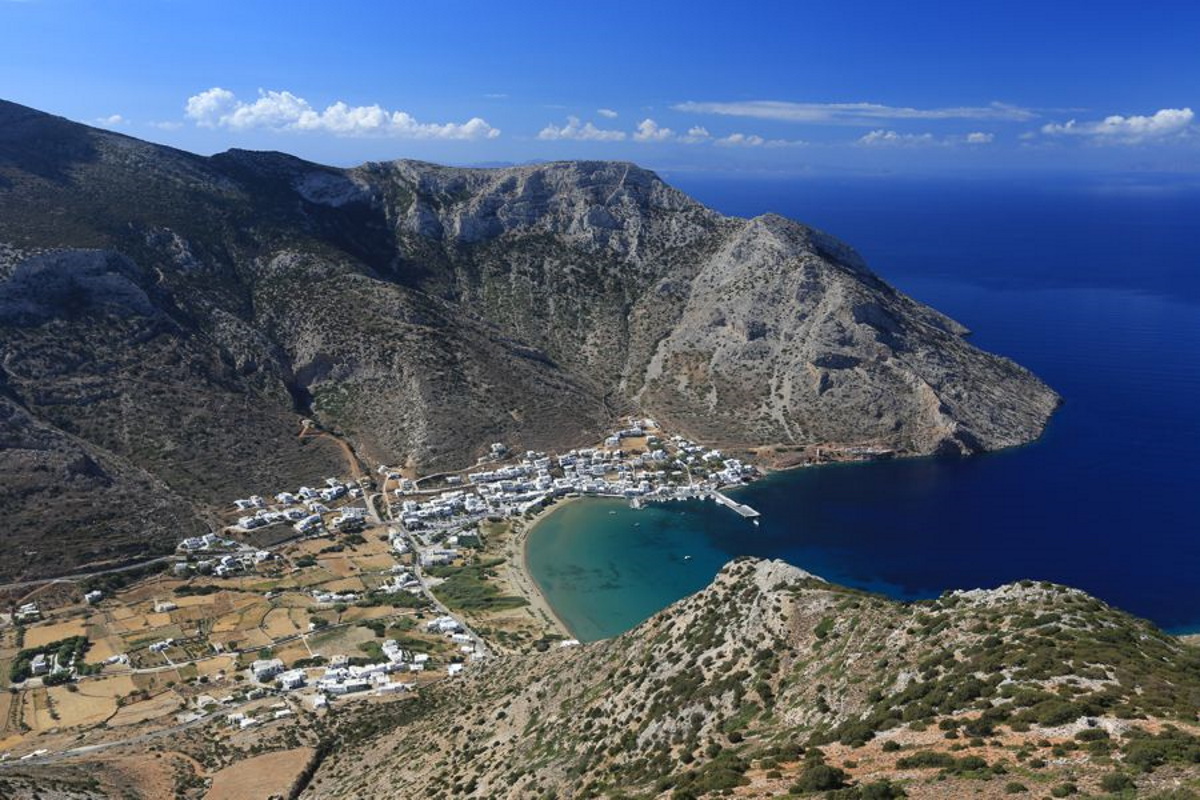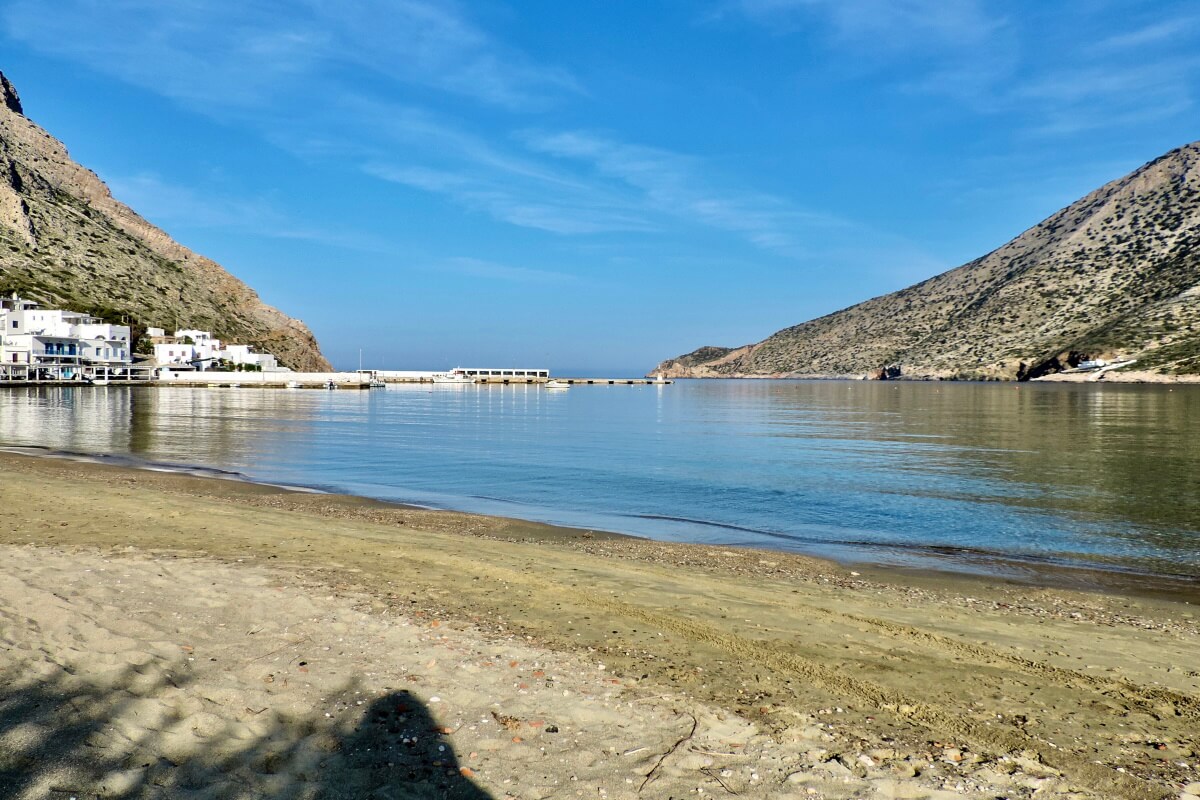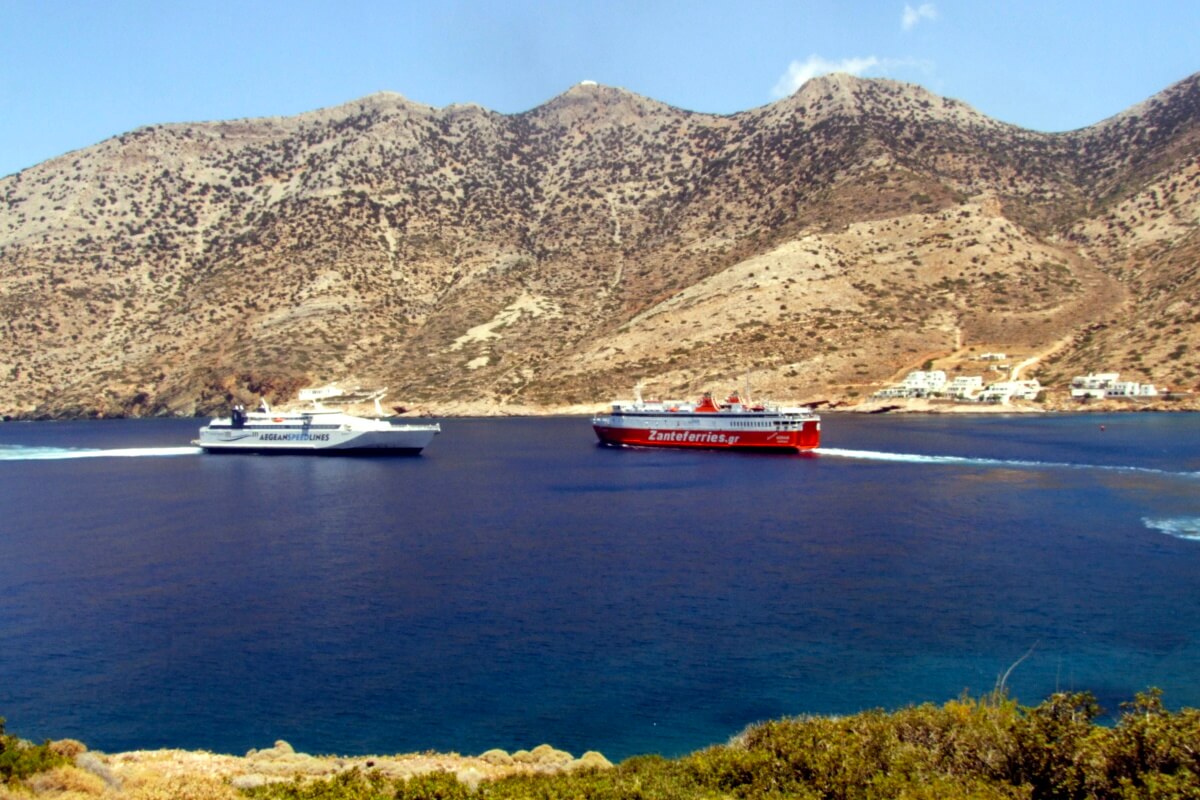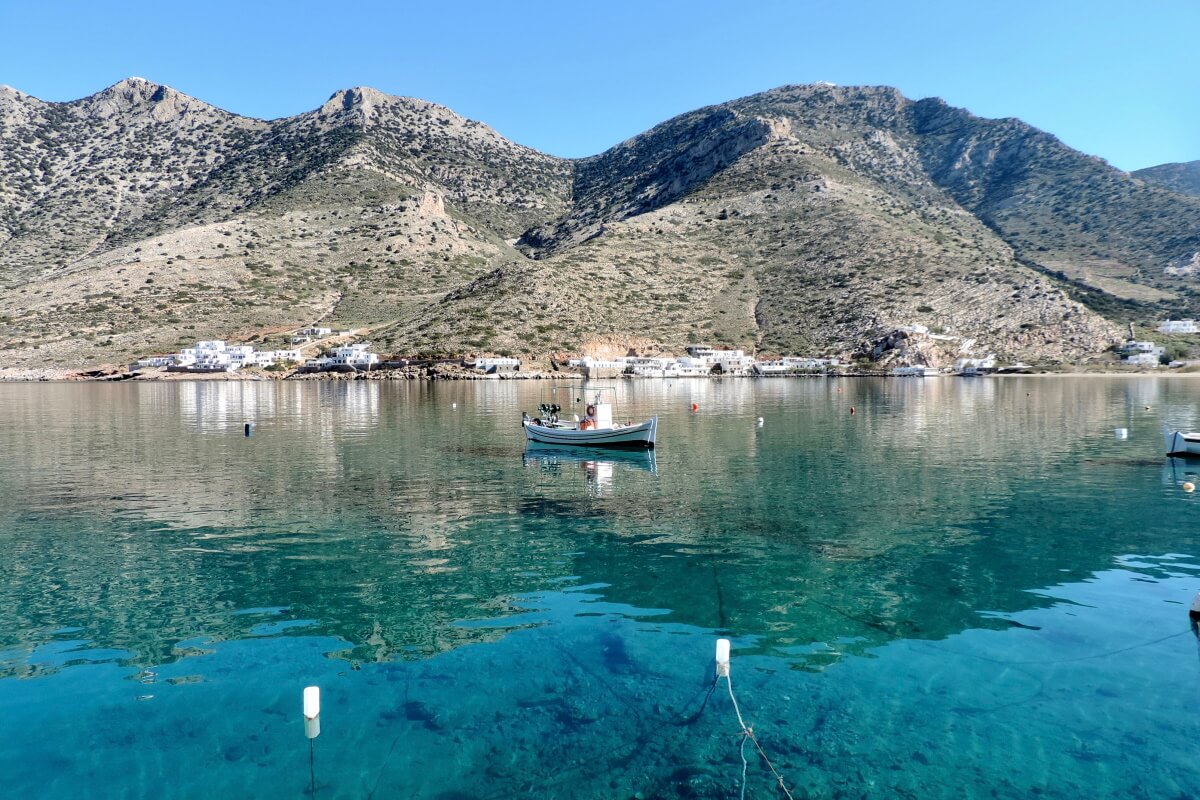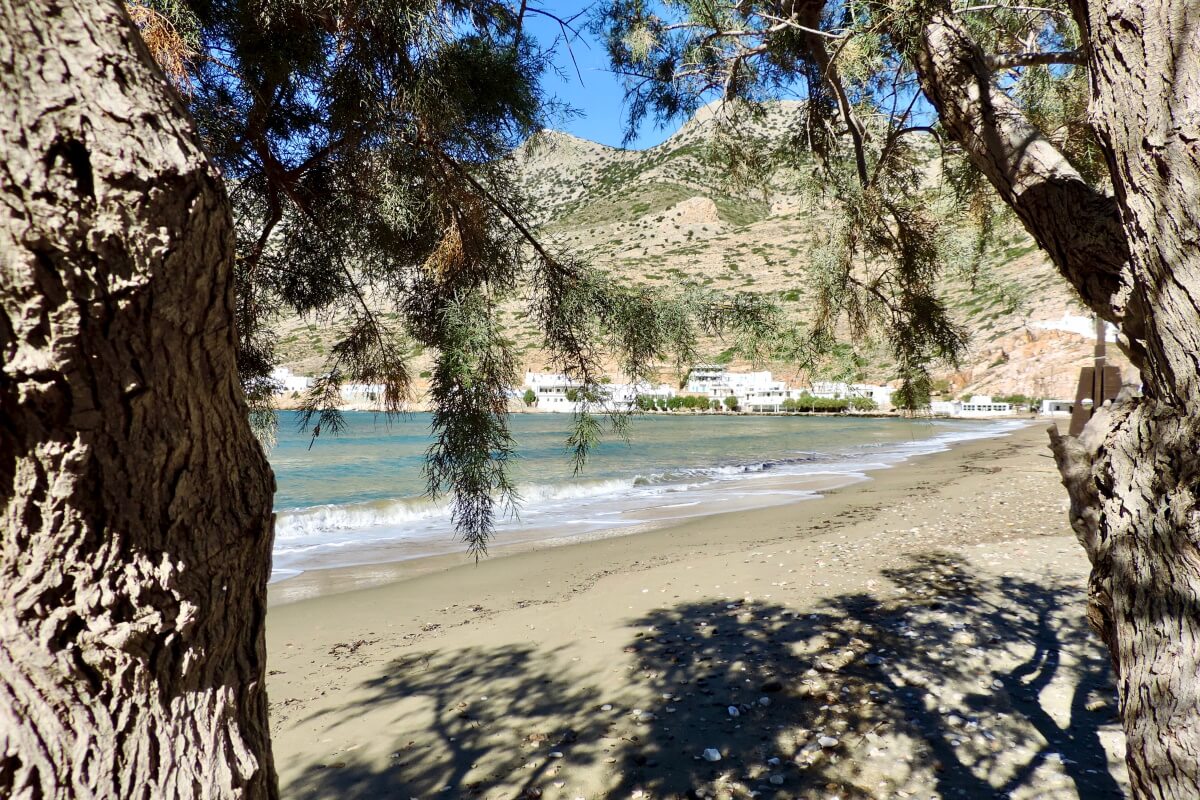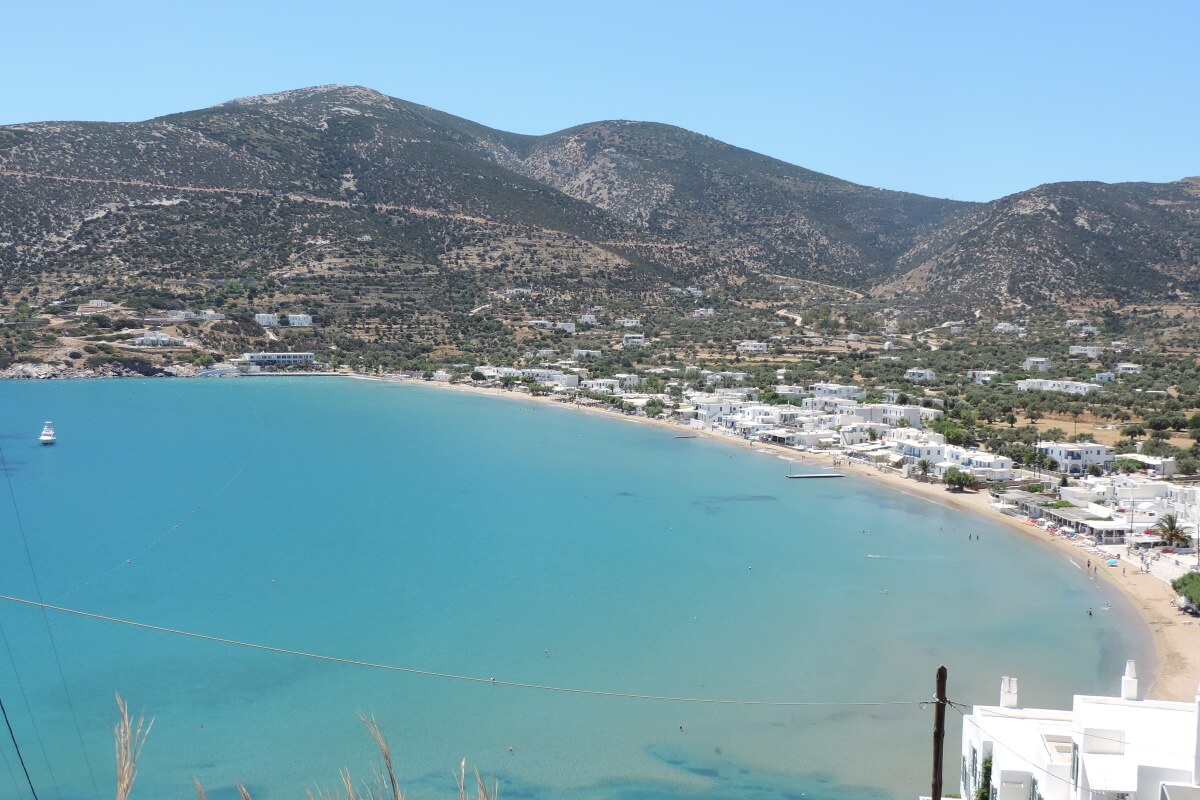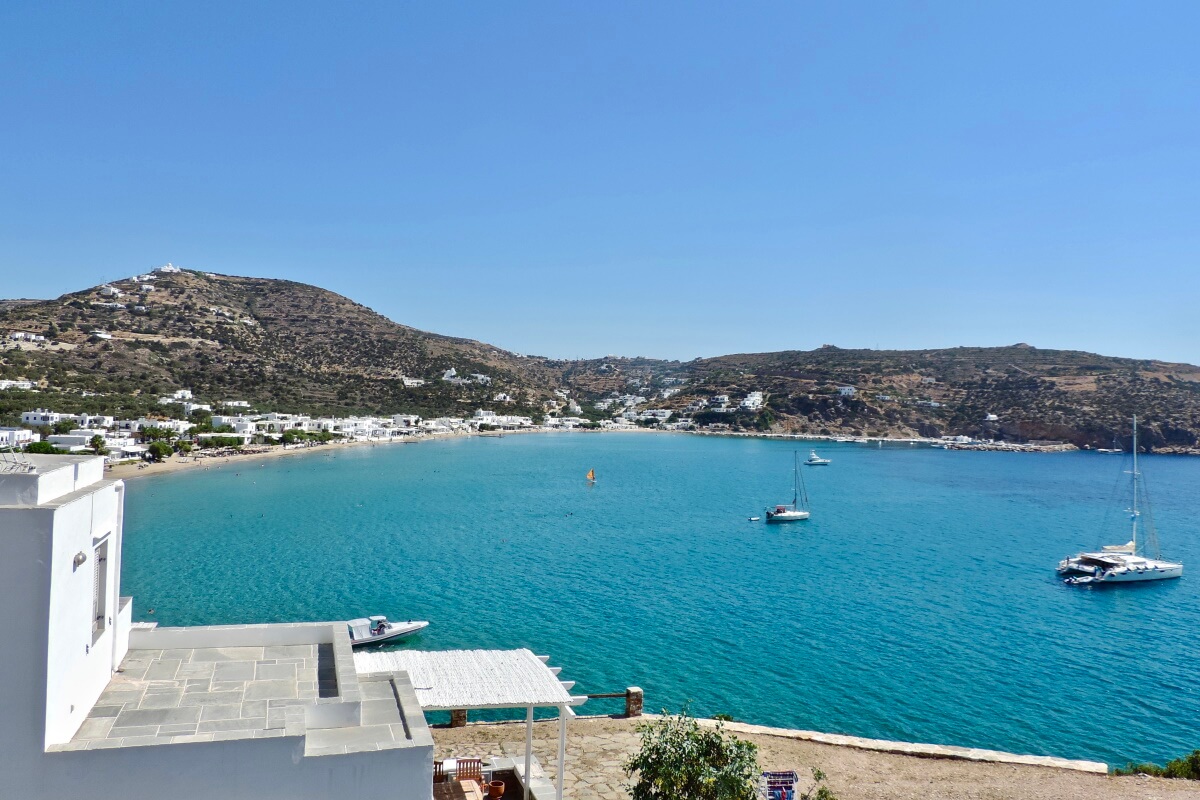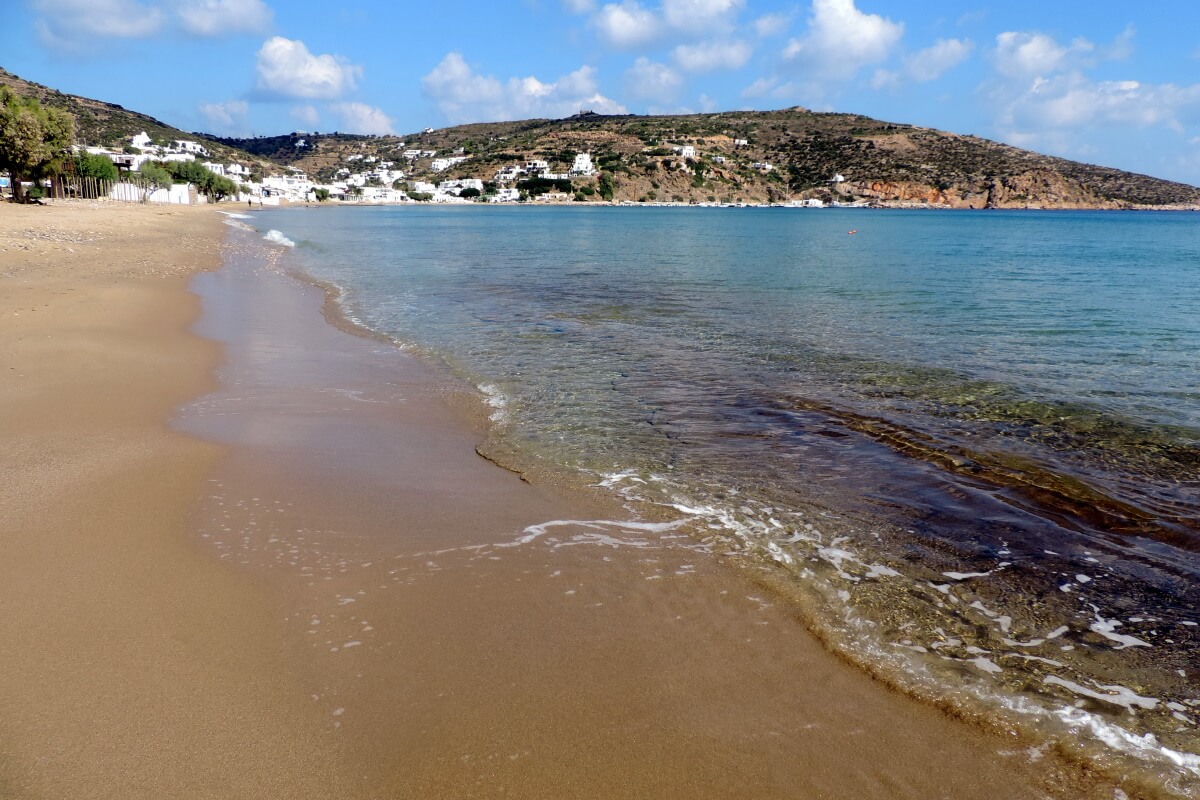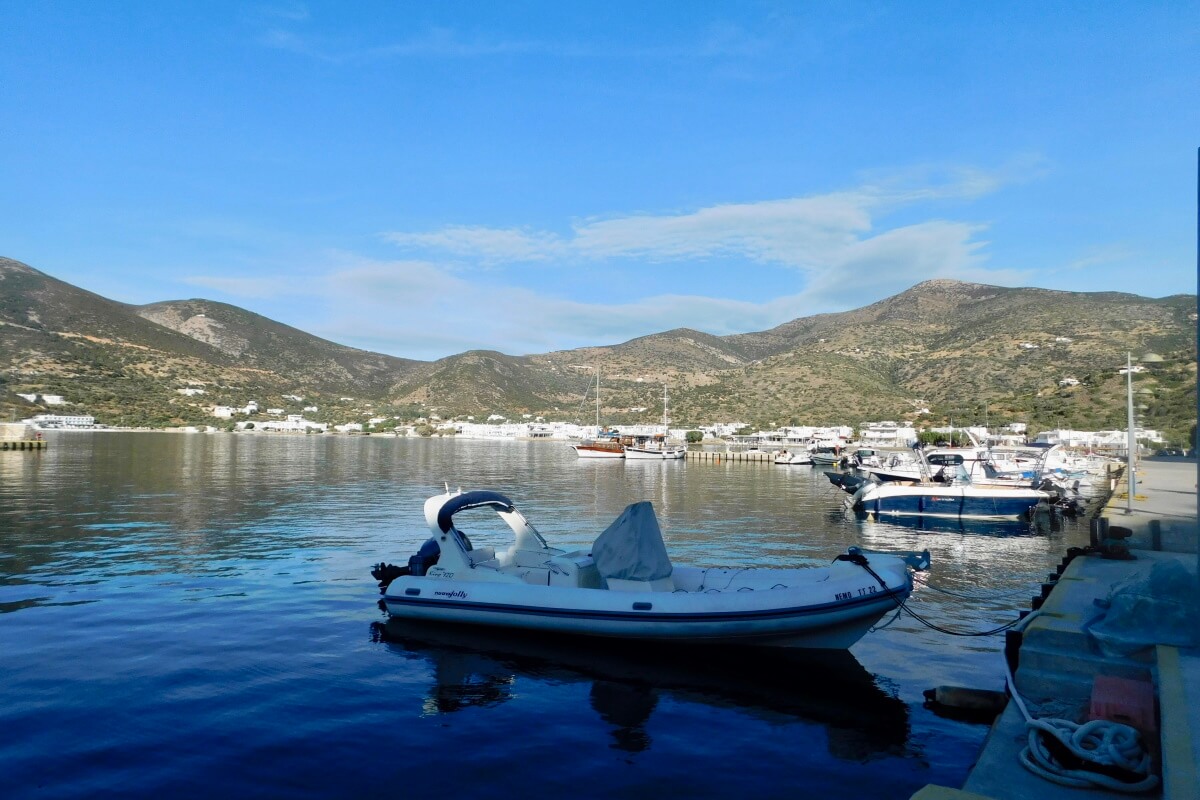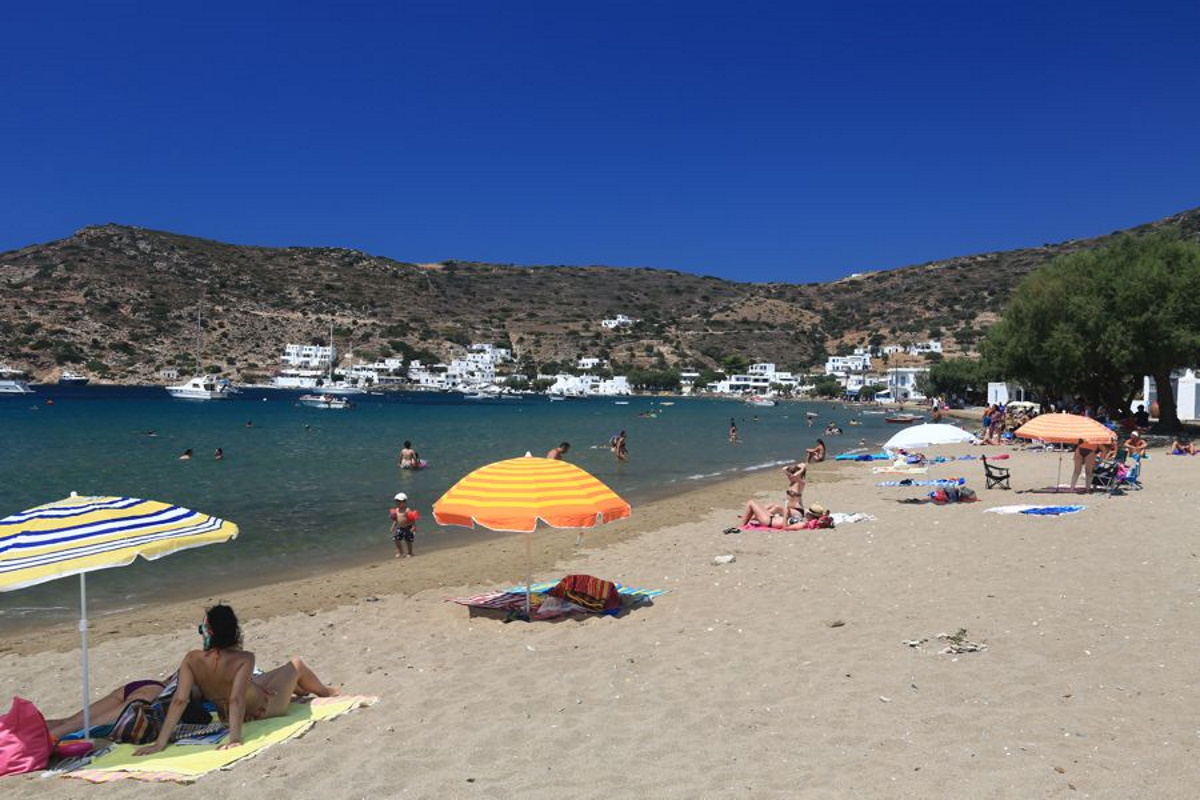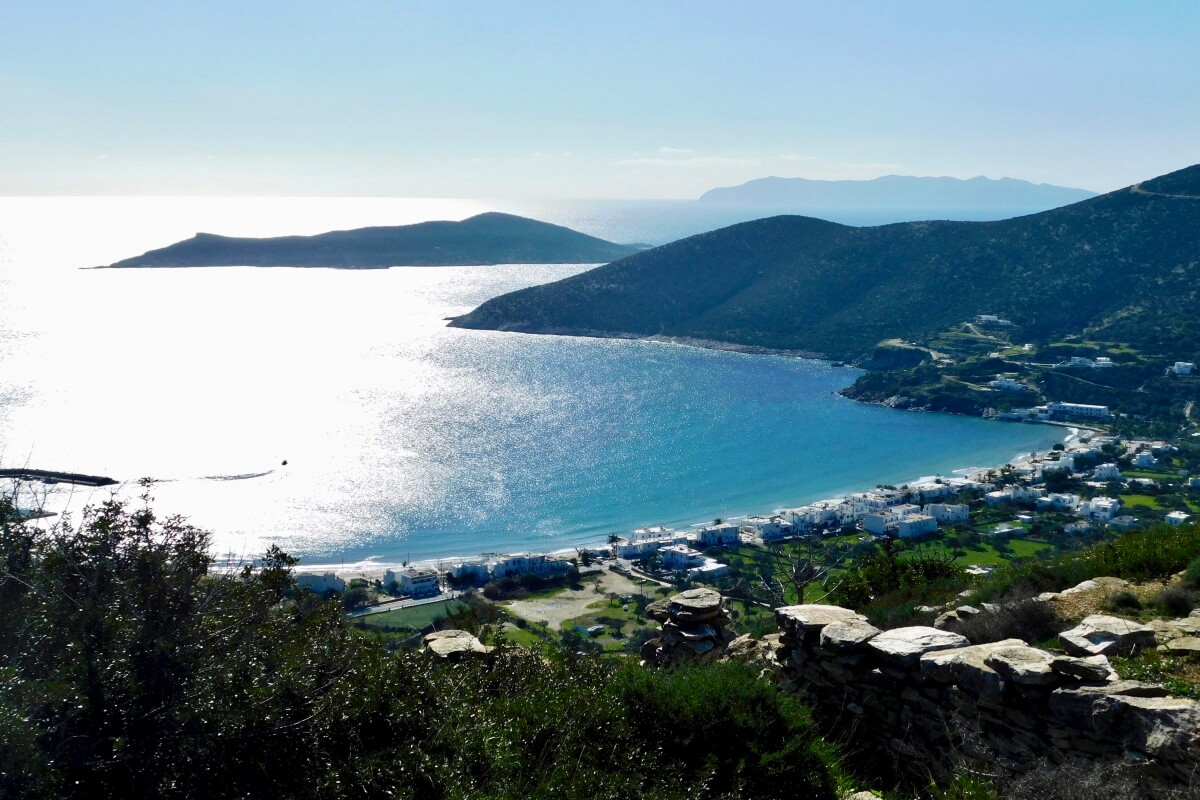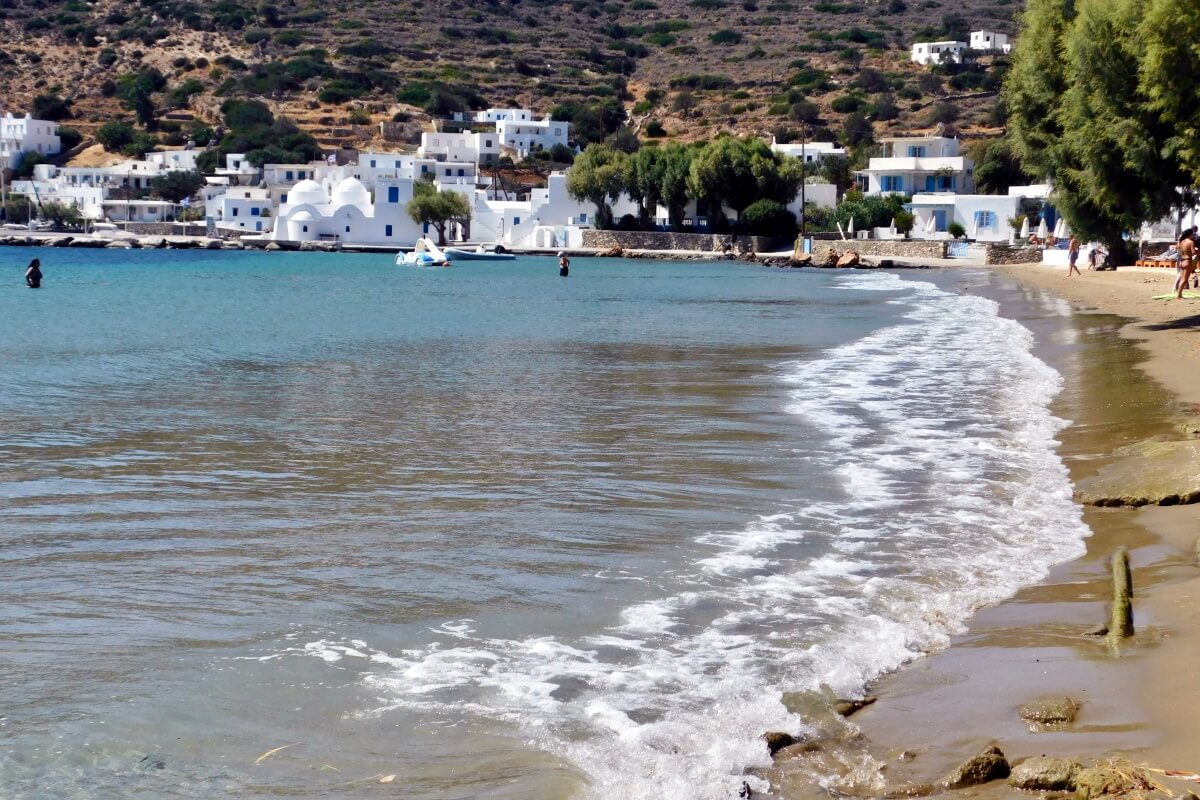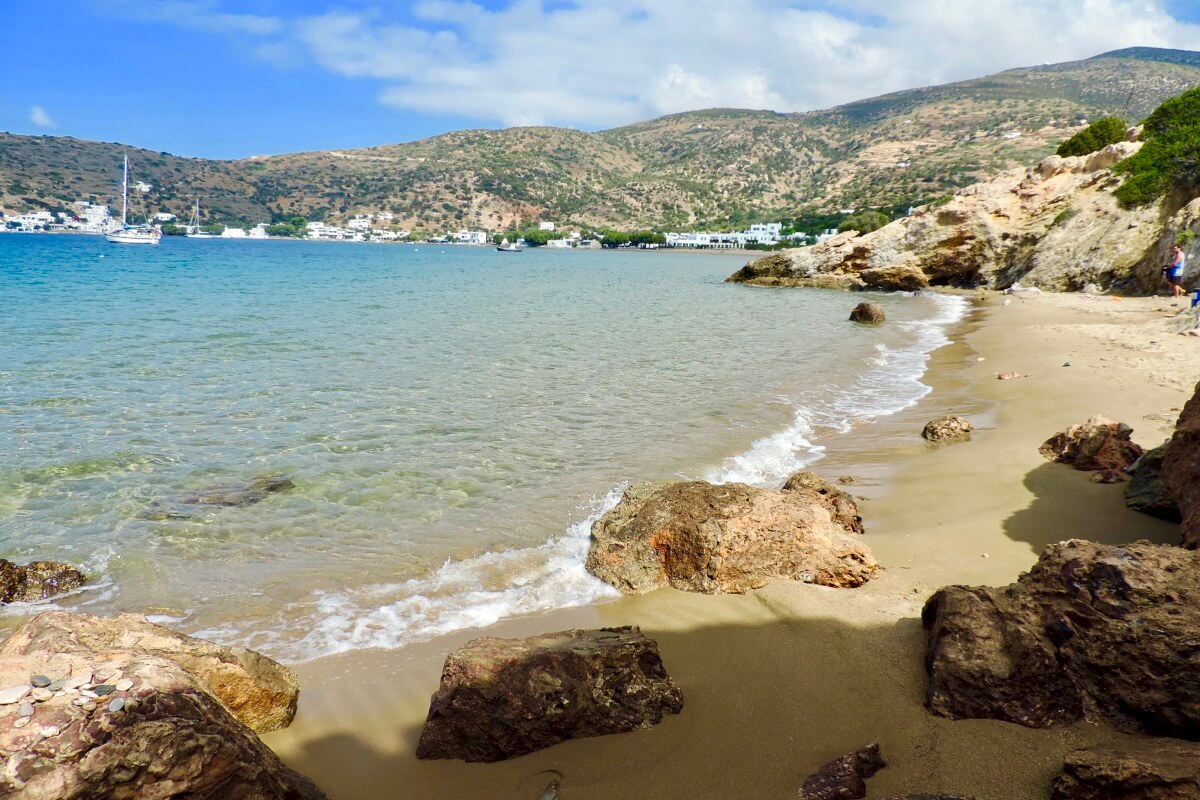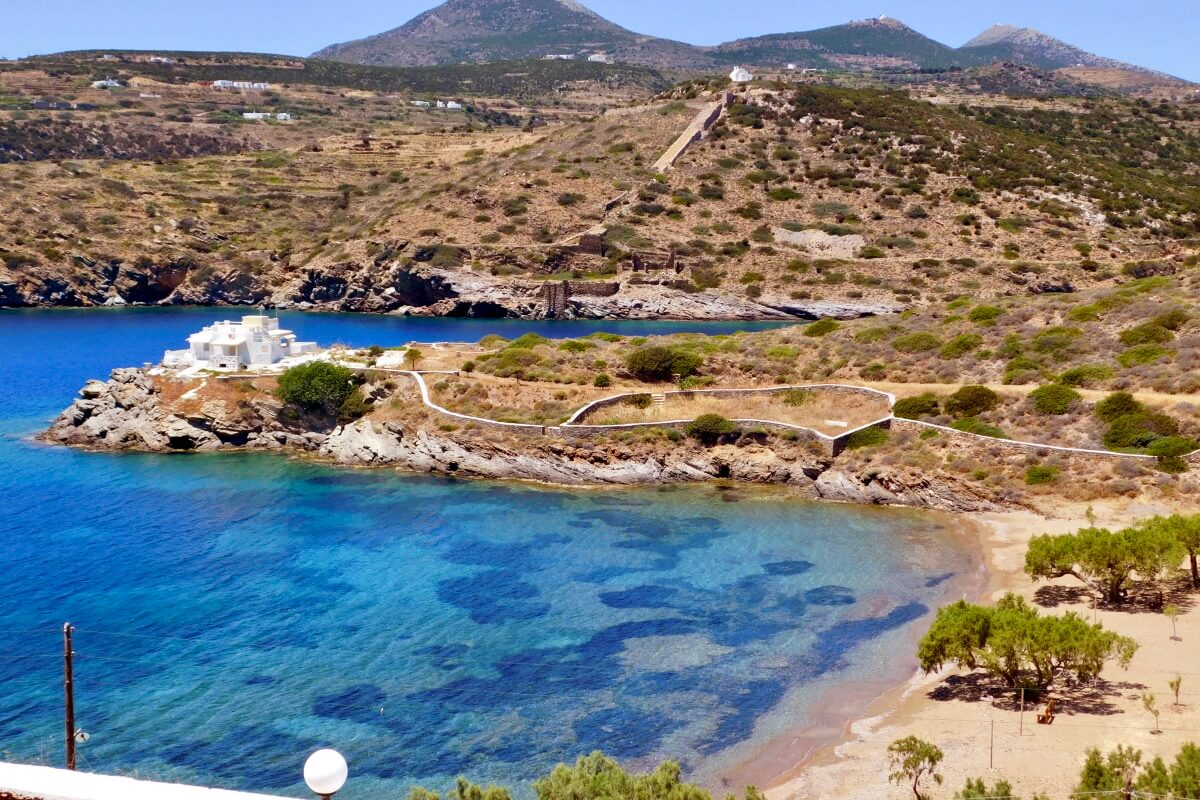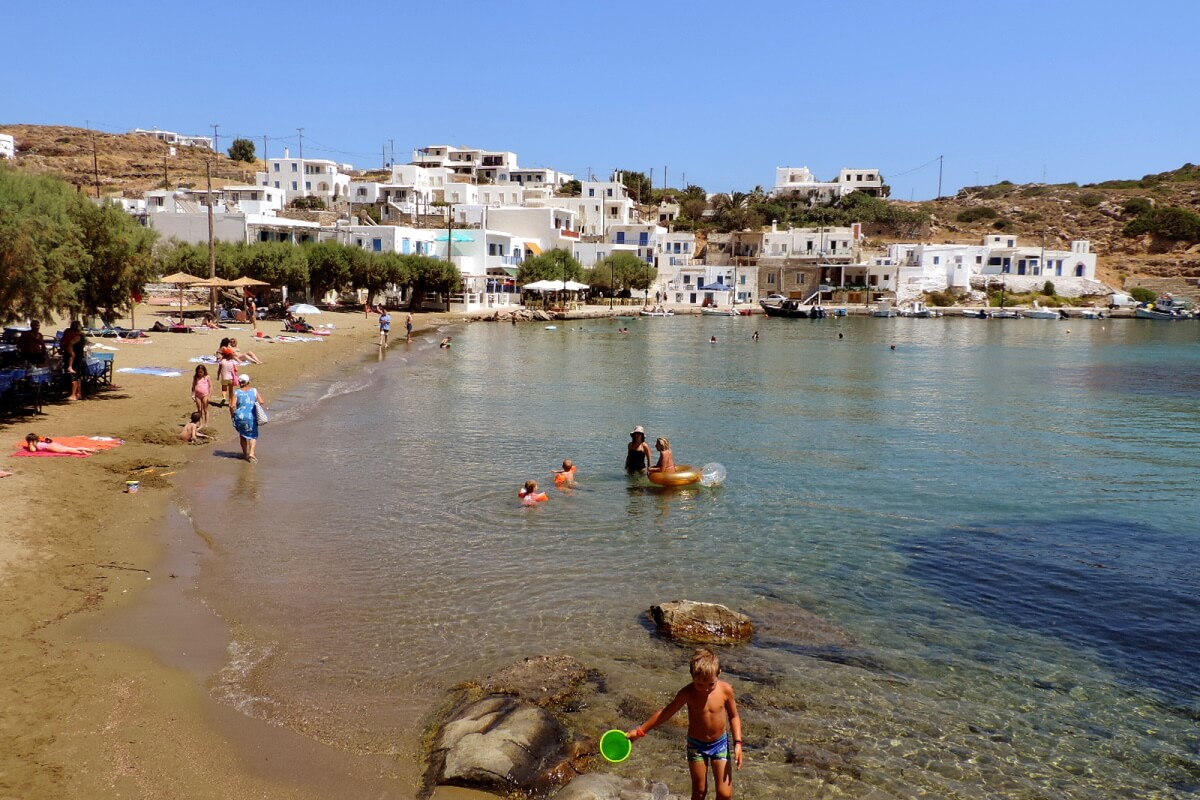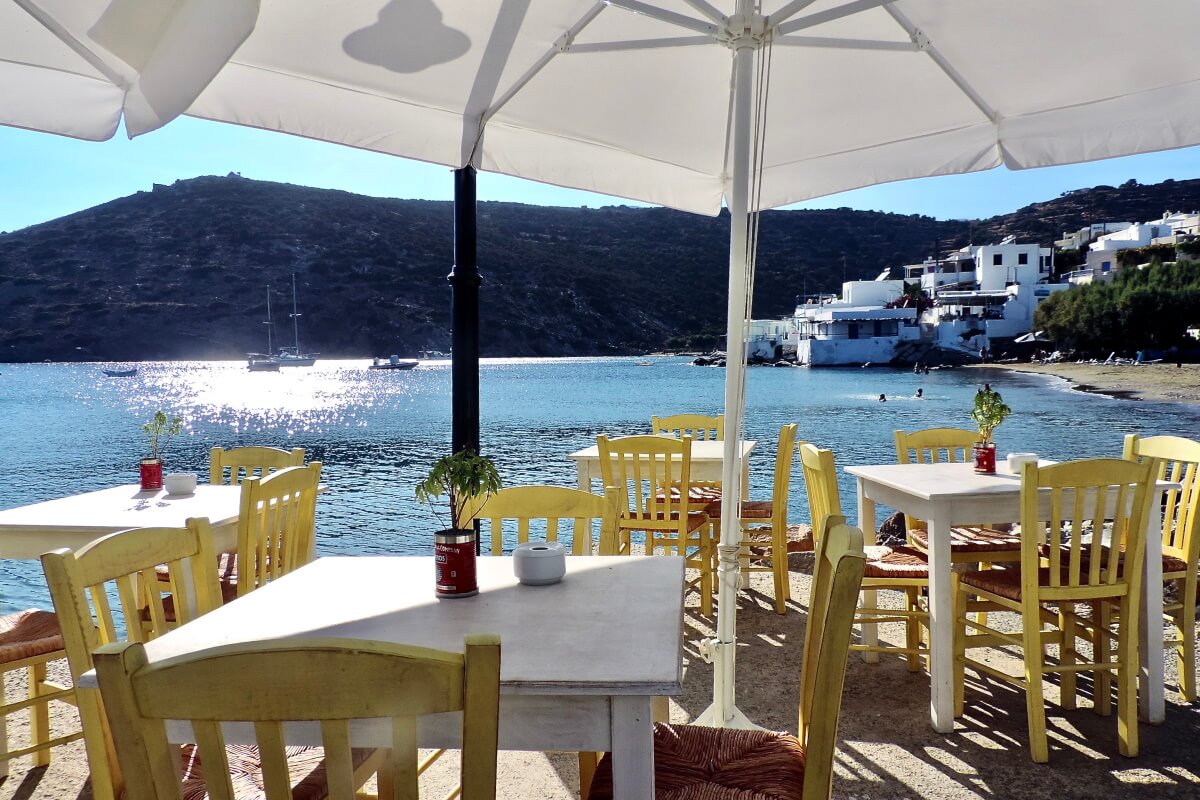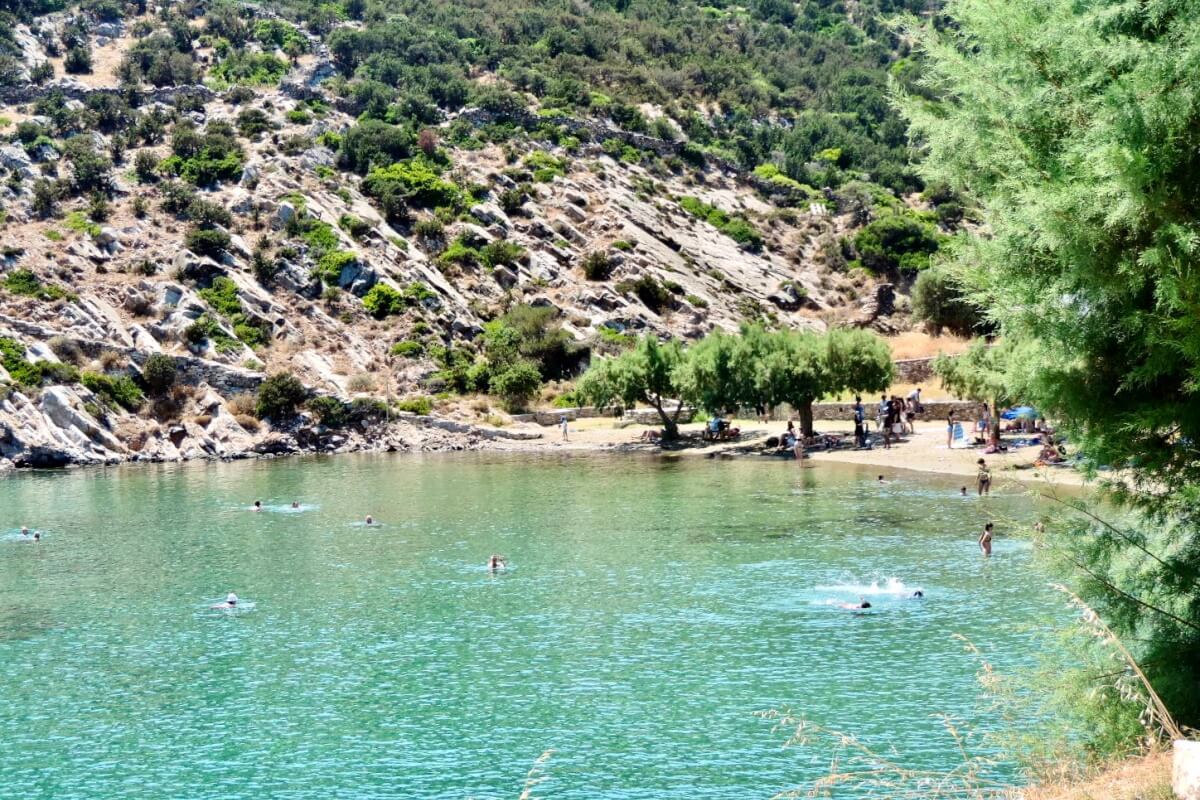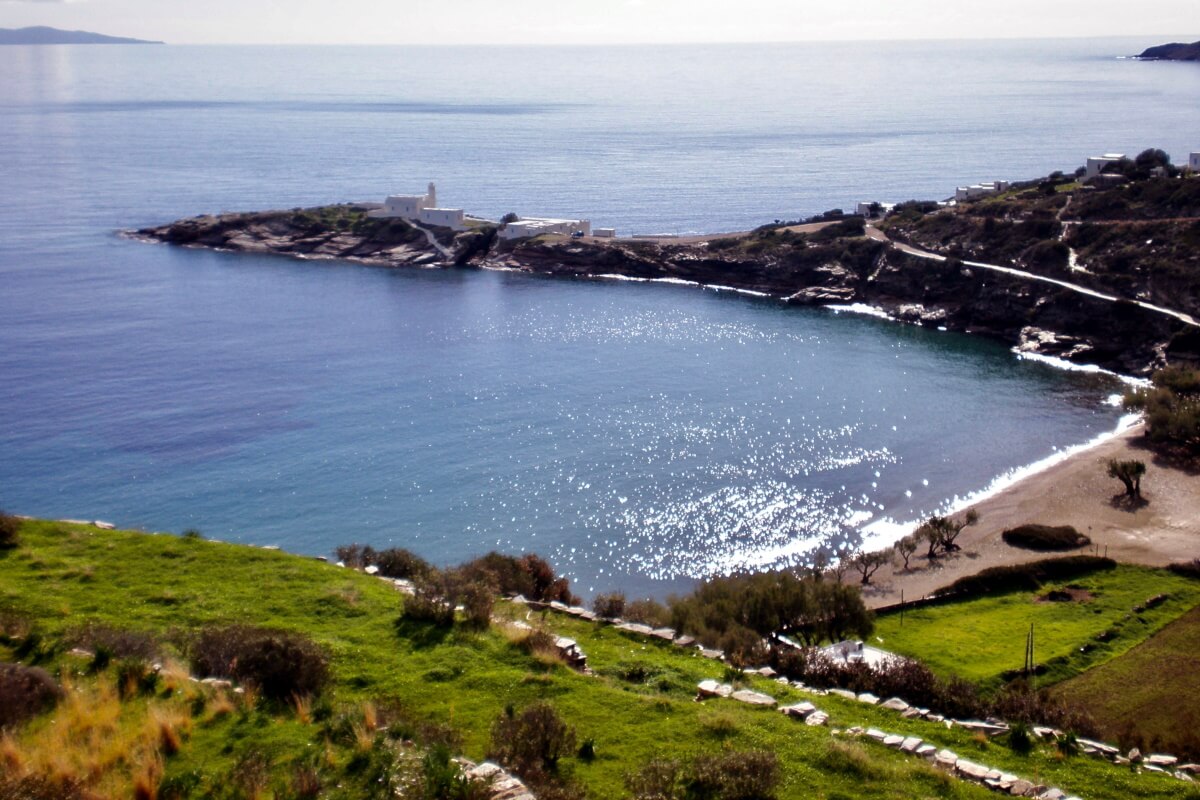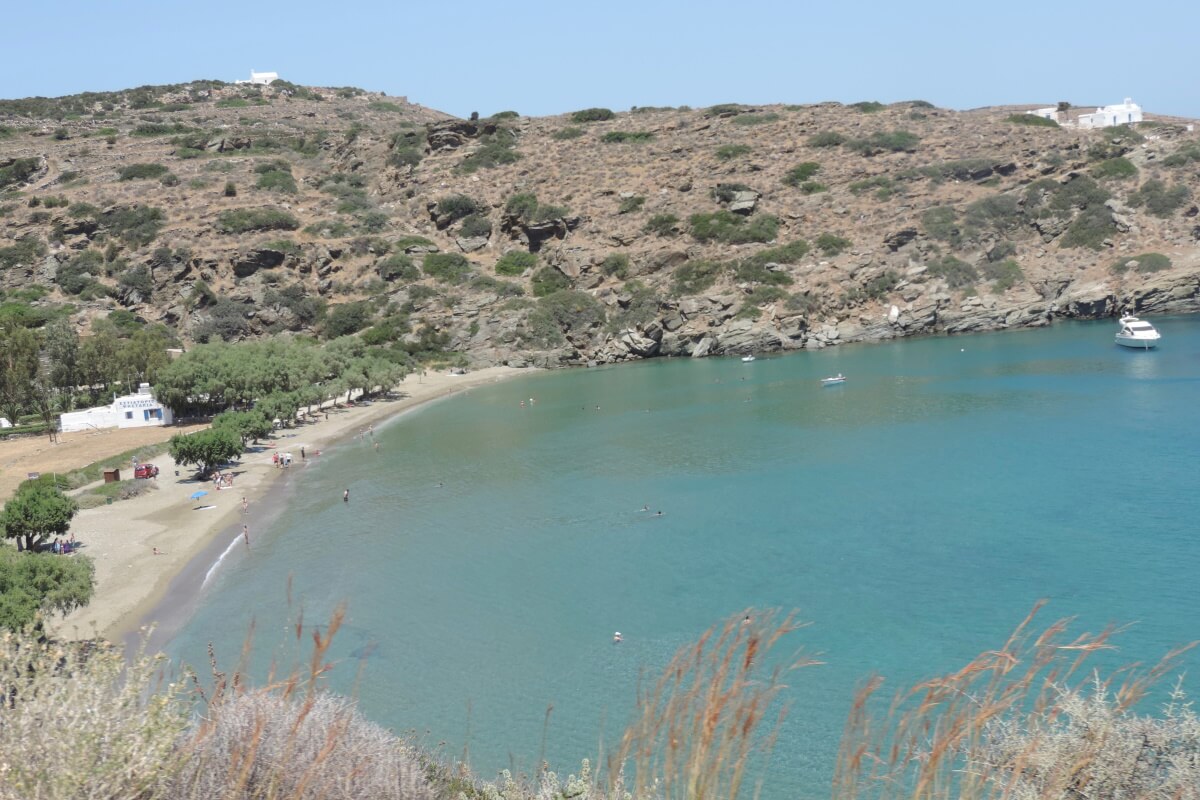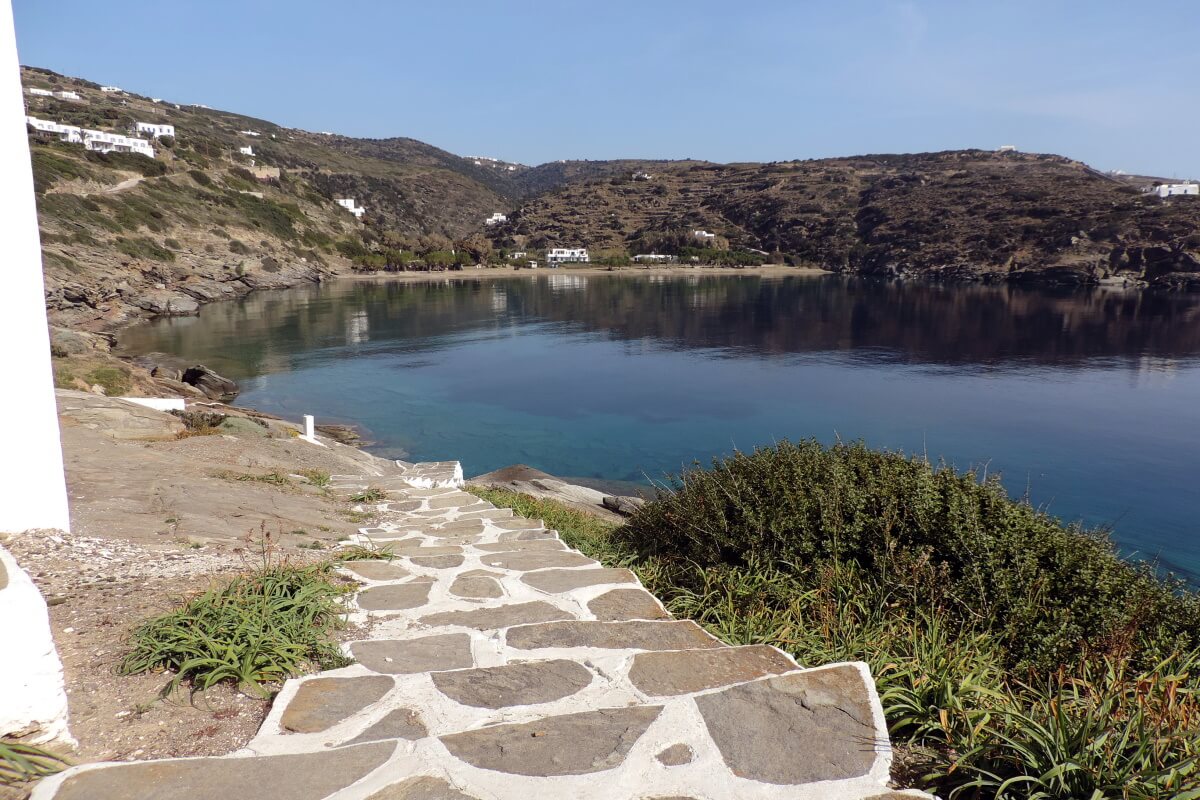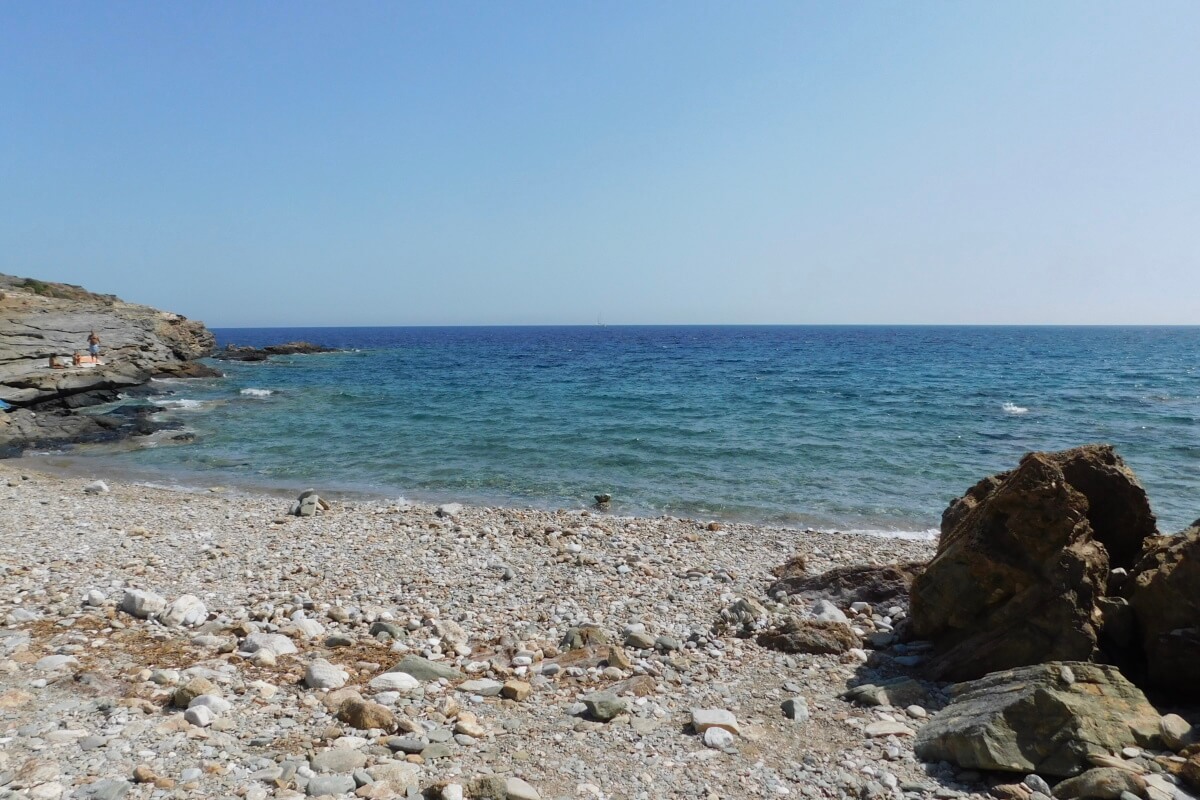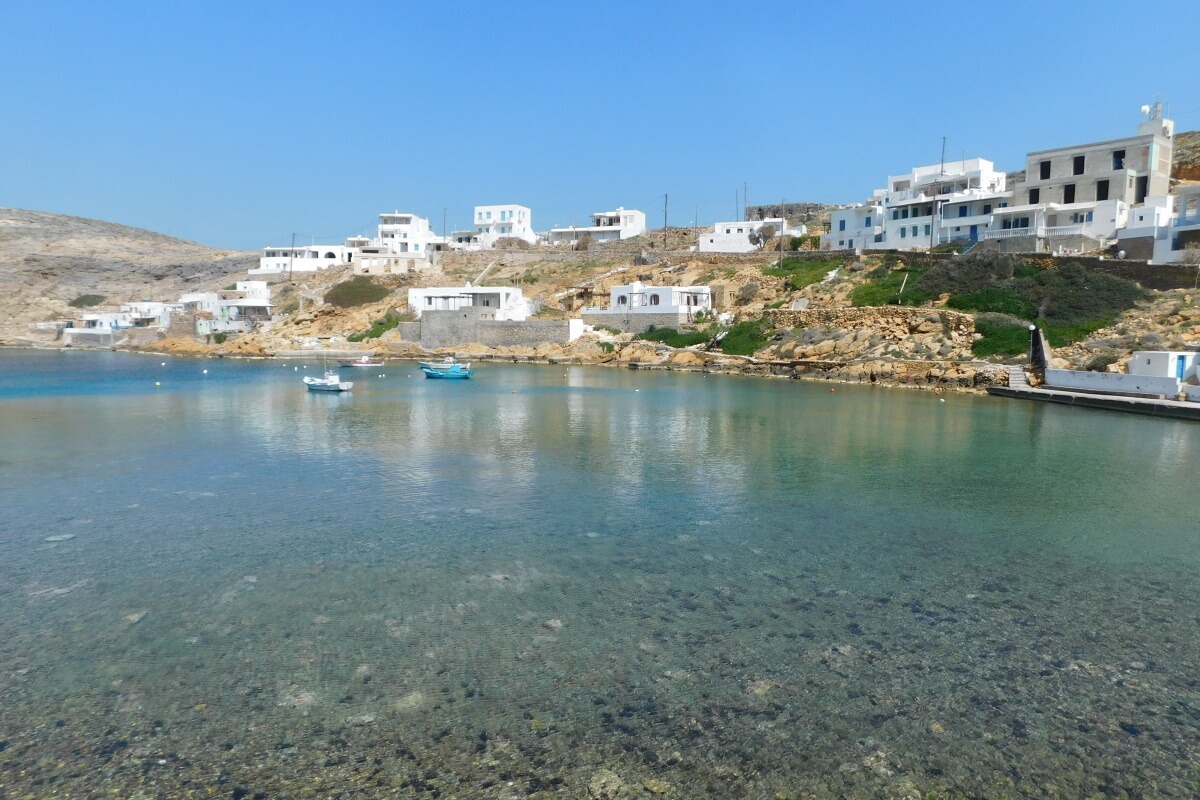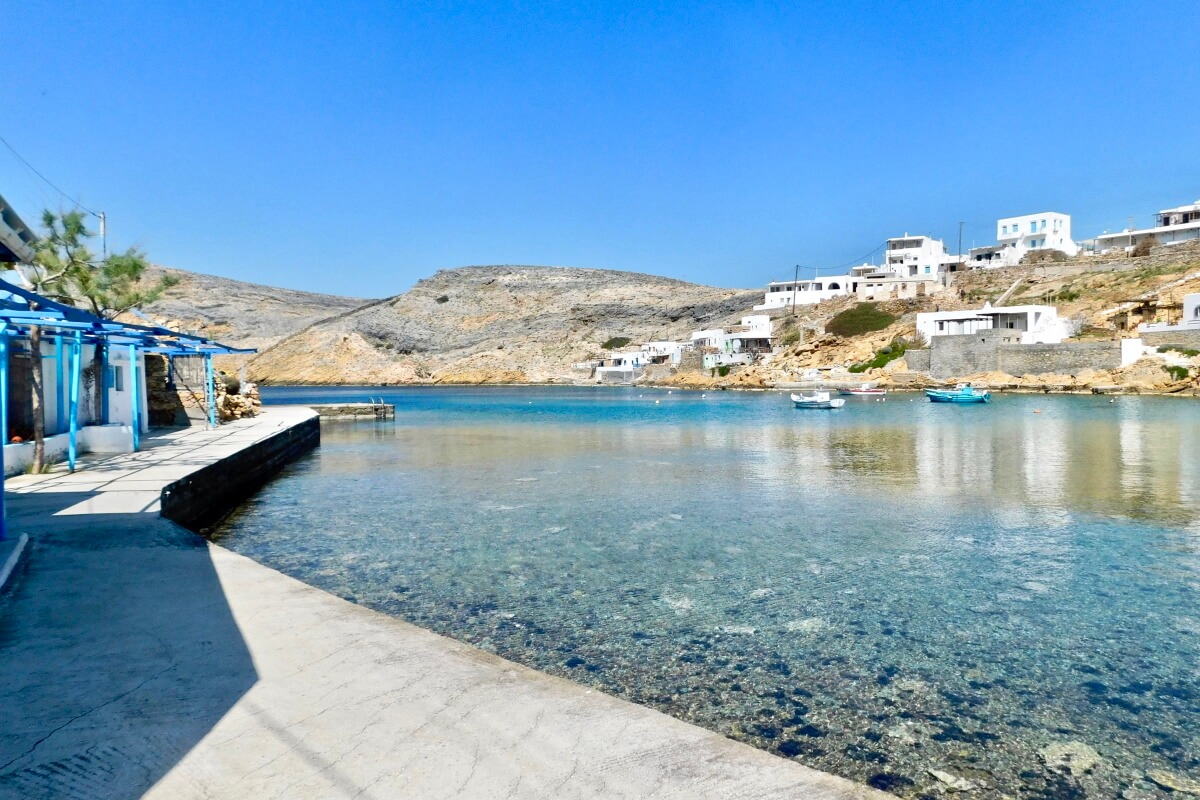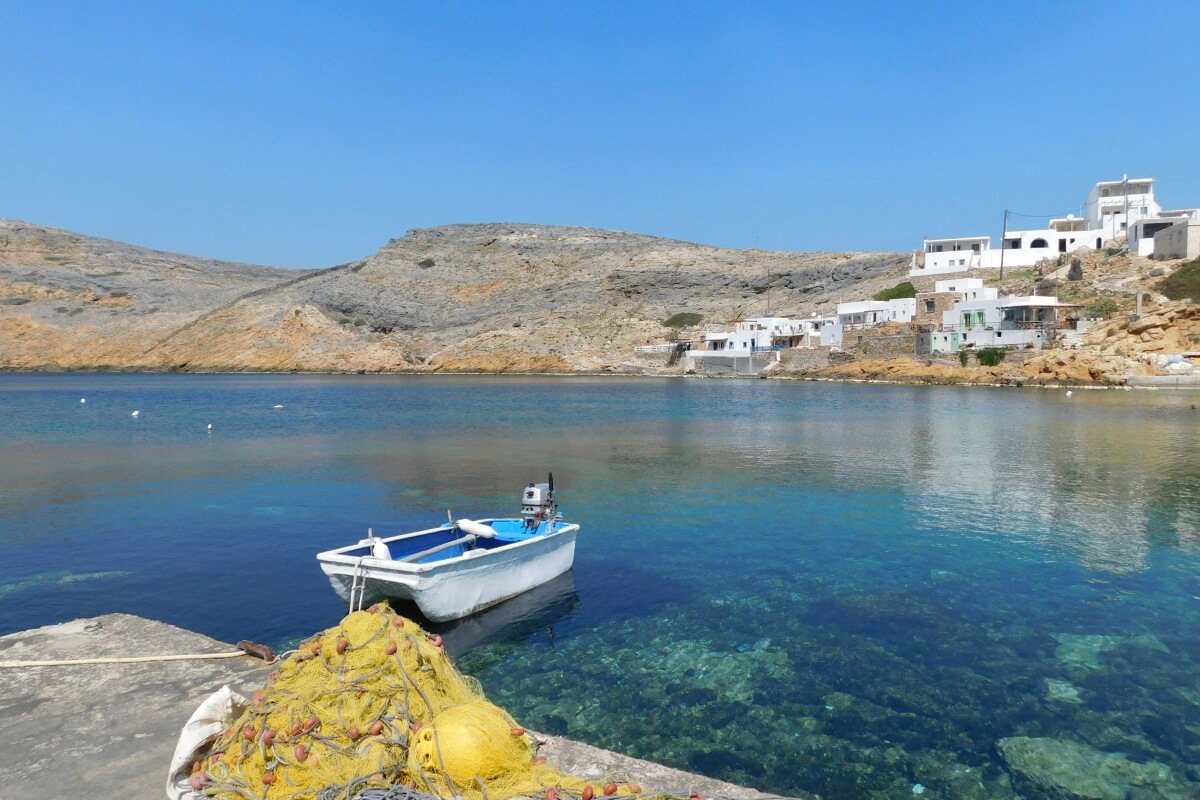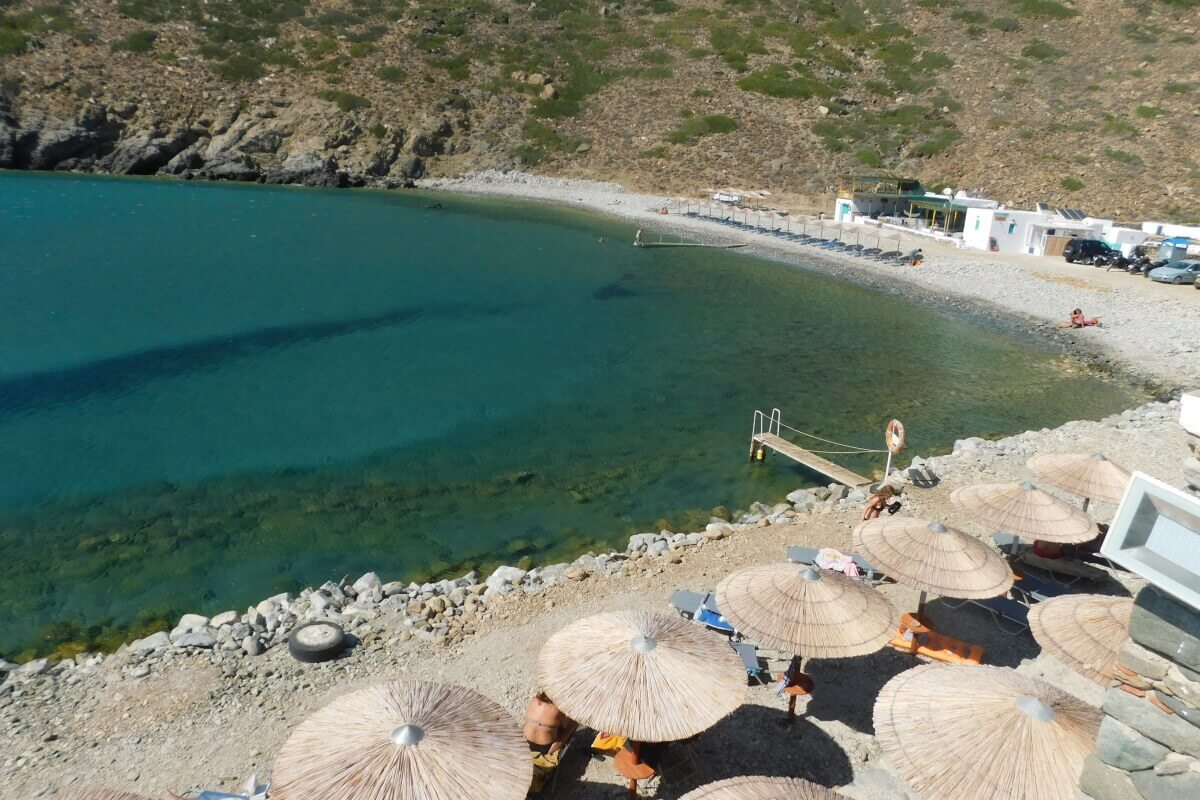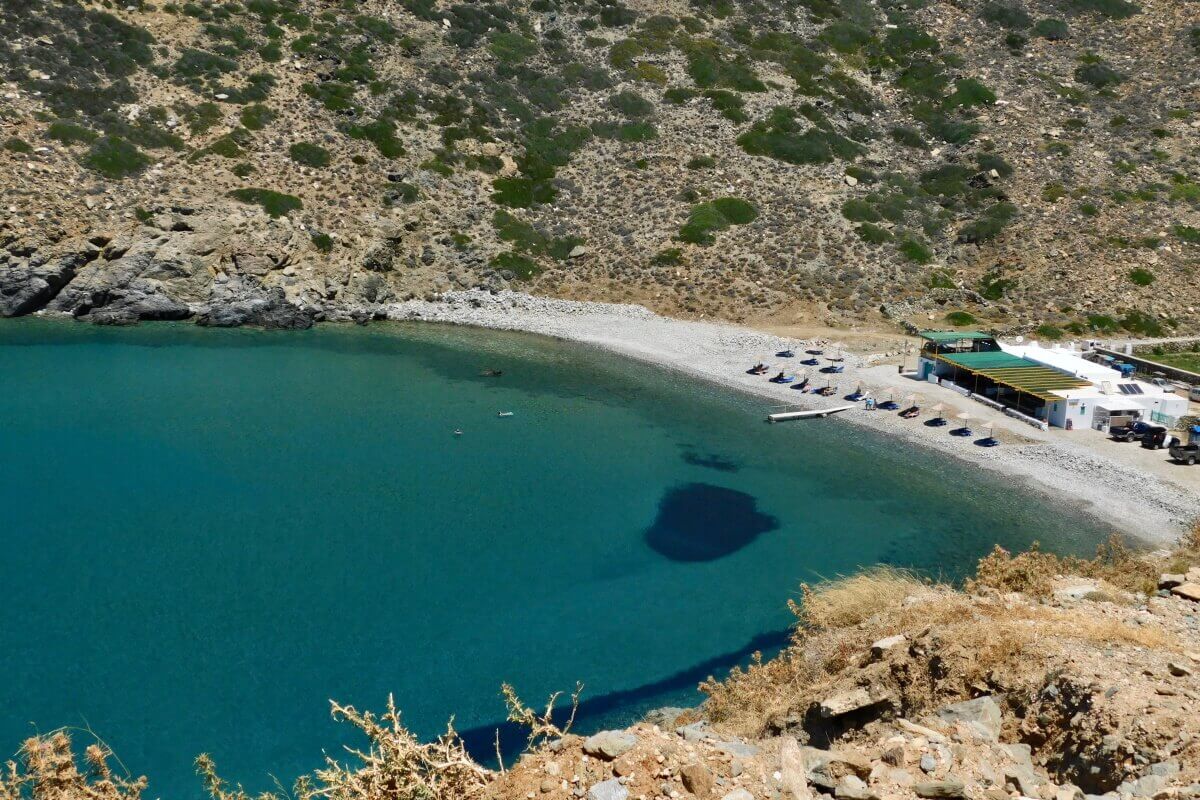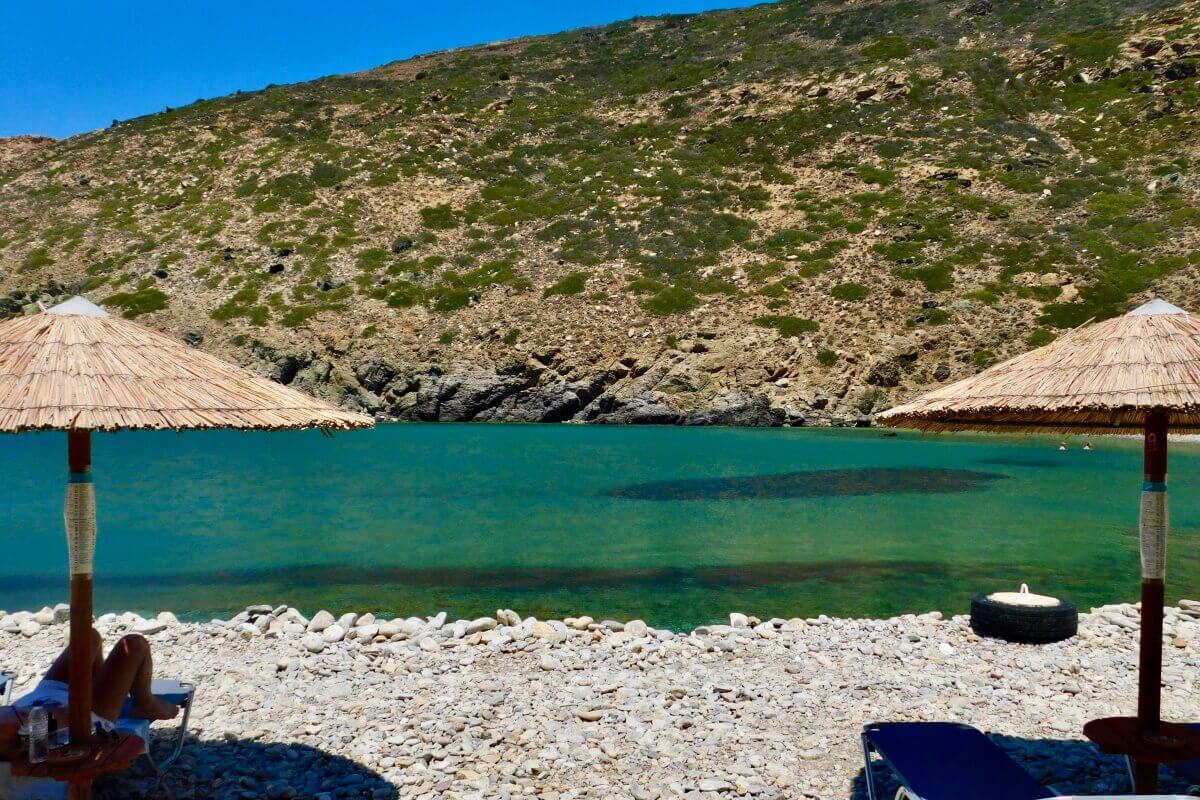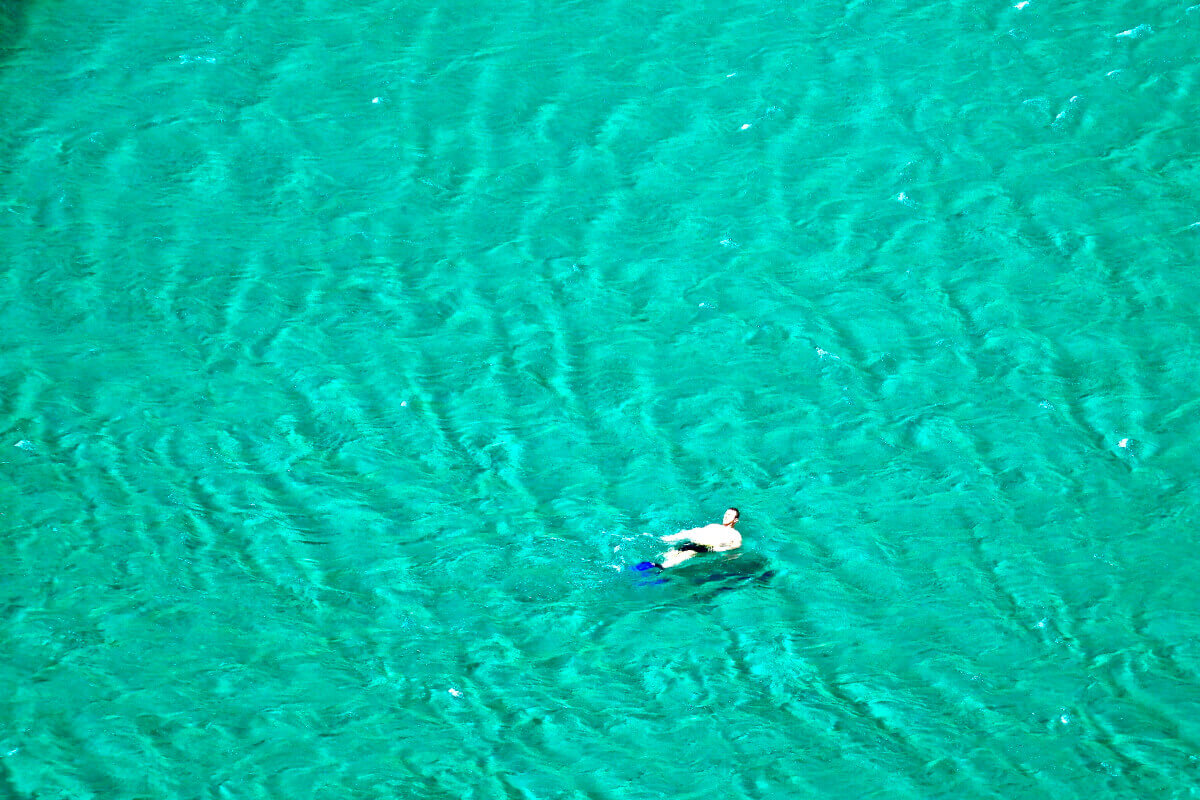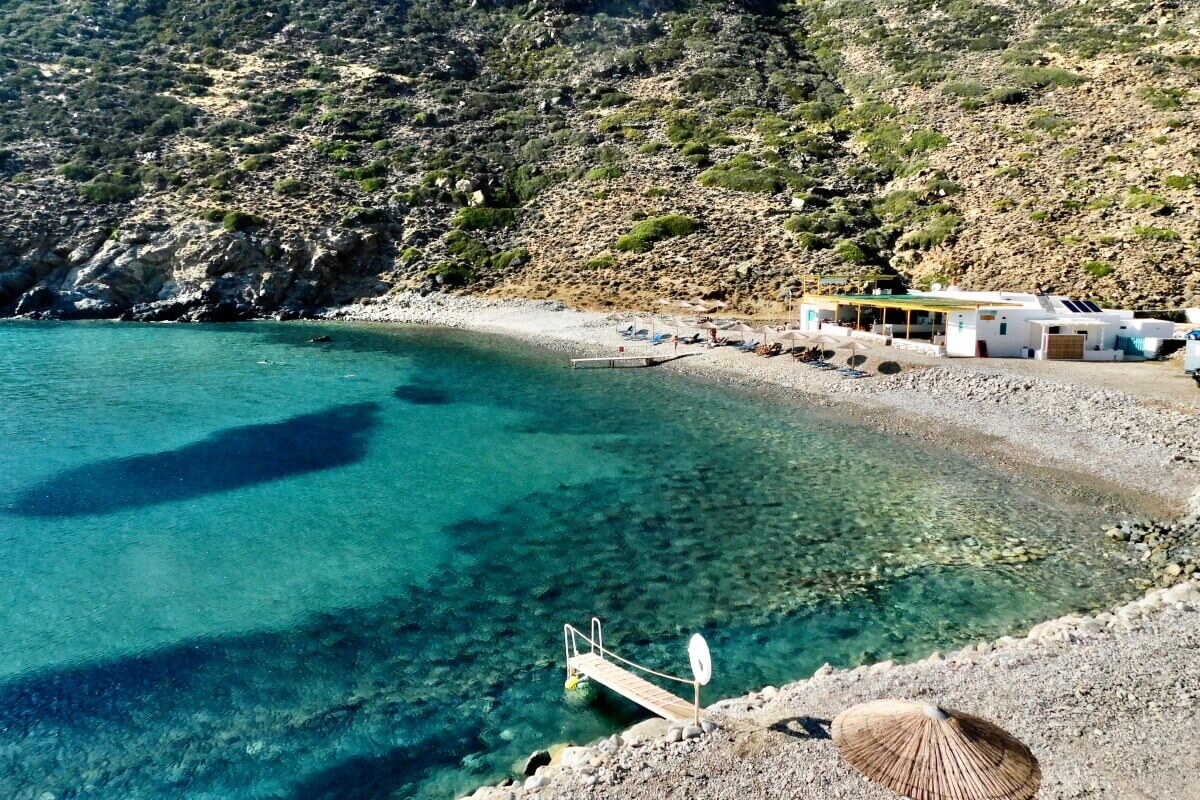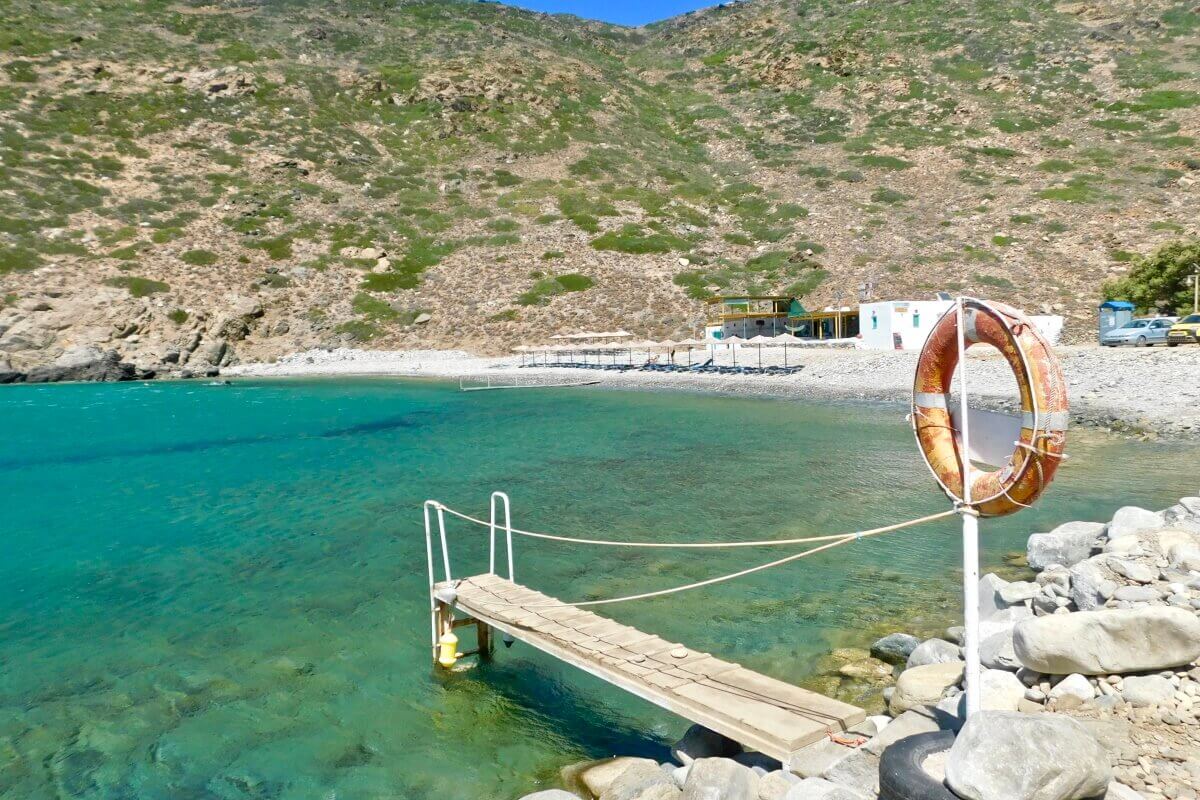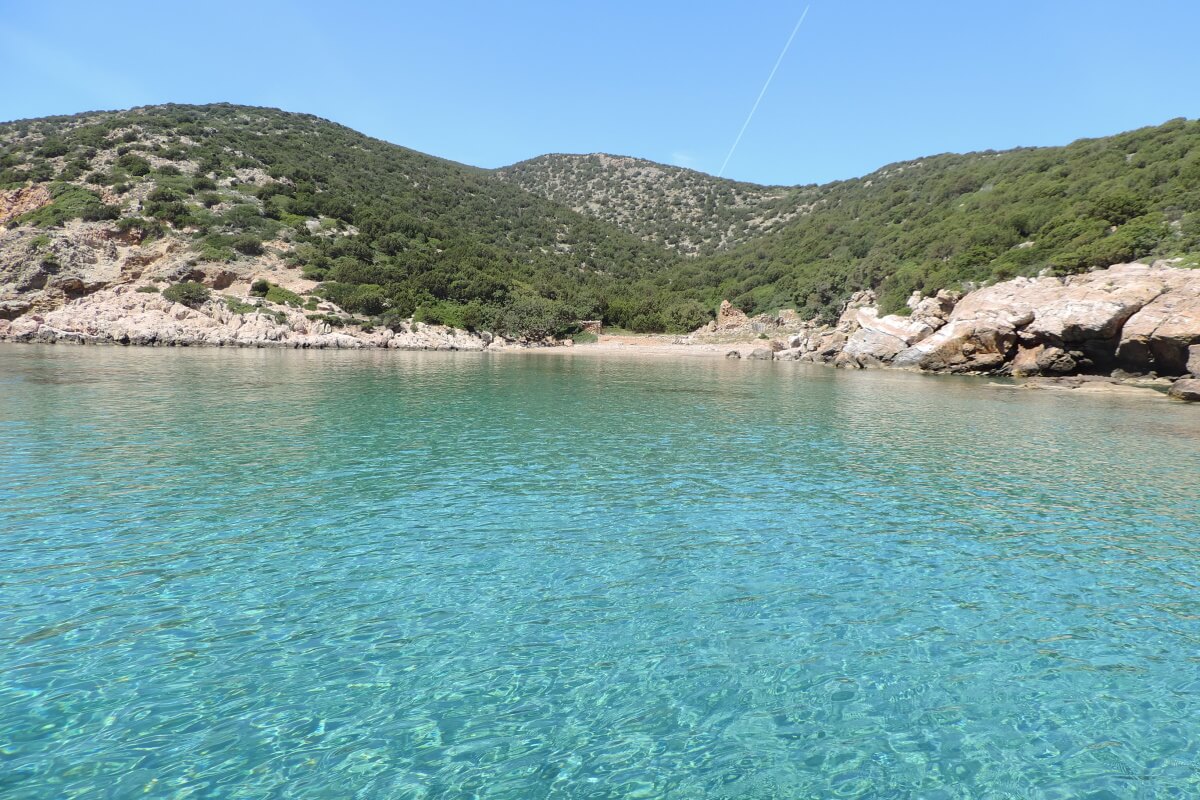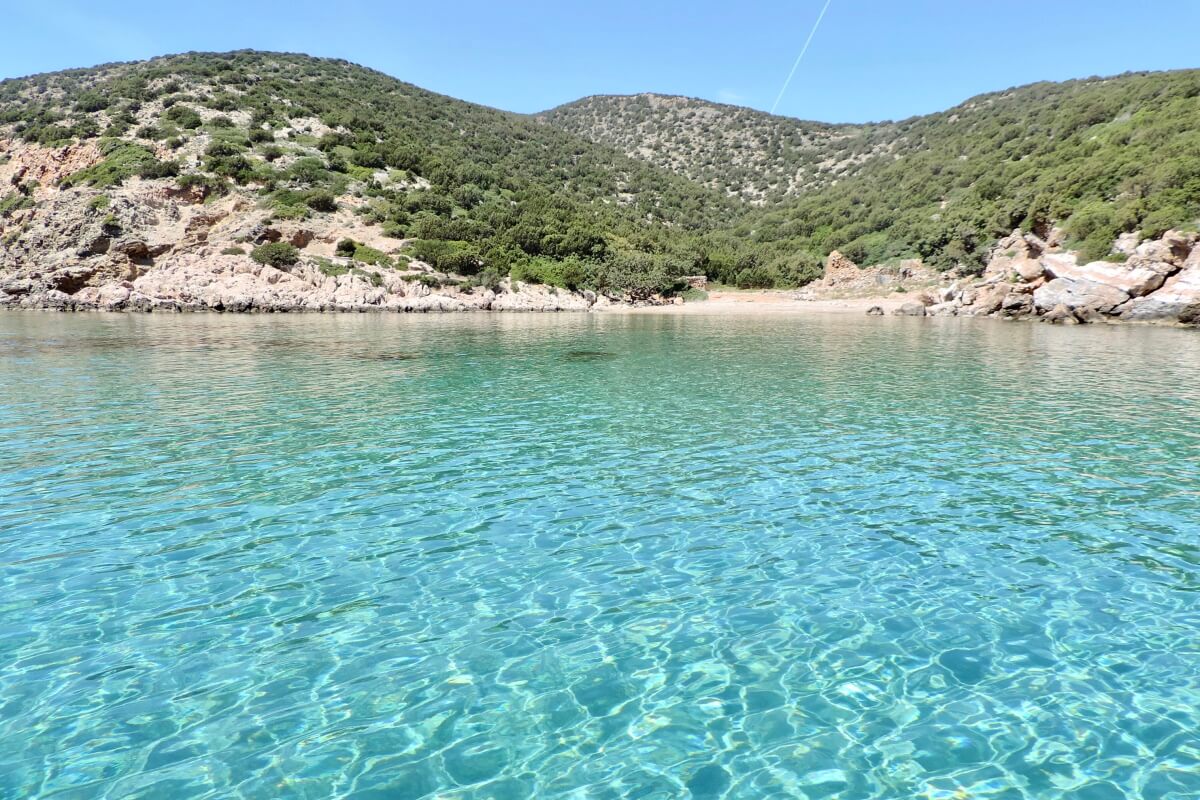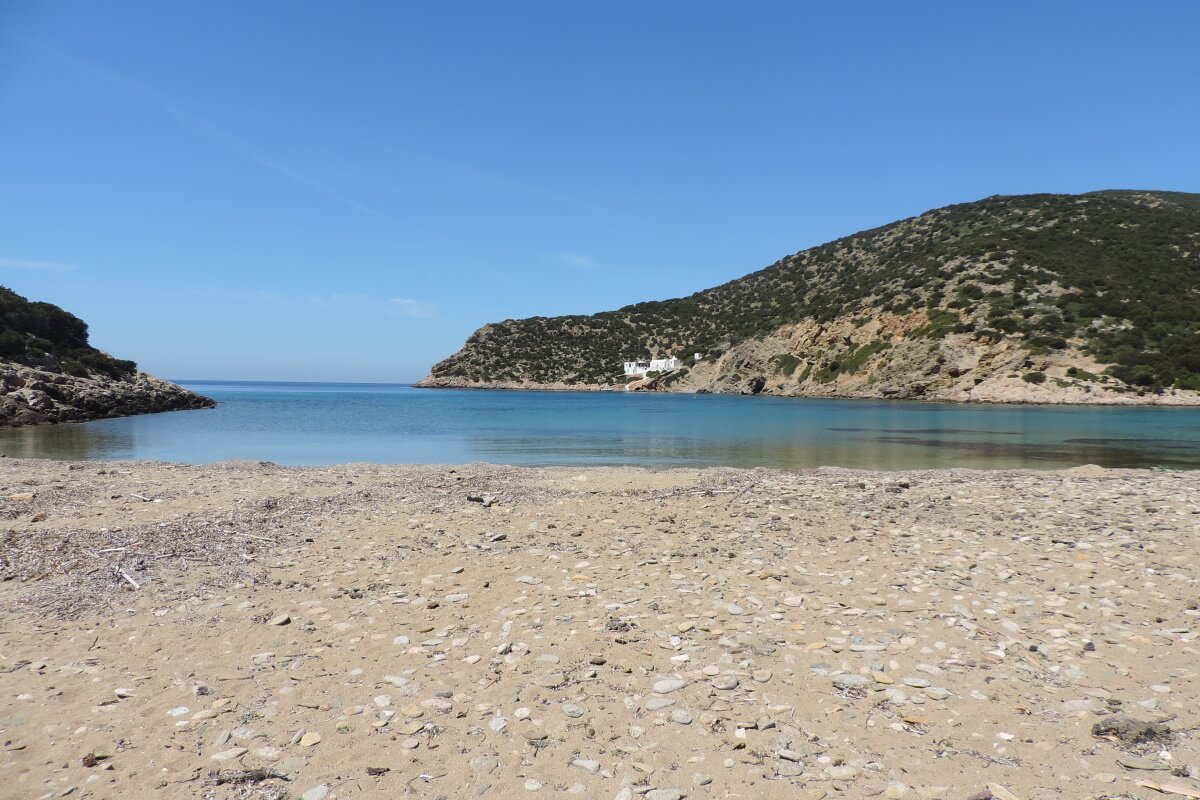Beaches
A few words about the most well-known...
The coastline and geomorphology of the island creates a multitude of different beaches to suit all your preferences. All around the island there are isolated sandy beaches, rocky cliffs, pebble beaches and organised beaches, two of which have been awarded the Blue Flag eco-label. Most beaches are accessible by car, though there are some which can only be reached via picturesque footpaths or by sea.
Kamares
Kamares is about 5 km away from Apollonia. It is the main port facility of the island and the largest coastal settlement. The majority of the rooms to let, hotels, and restaurants are to be found in Kamares, as well as a number of grocery stores, shops, bakeries, a private camp site, tourist offices, numerous cafés, pâtisseries, and pottery workshops, the Municipal Information Office, and the Port Authority.
A number of hiking routes start out from Kamares, including those leading to the Nymfon church at Korakies, the Mavri Spilia (the Black Cave), the site of the old mining area, and the NATURA protected site. Another trail of greater difficulty leads to the north of the chapel of Agia Anna in Pera Panta, heading towards Agios Simeon. Another hiking route leads east to Apollonia and the central inland village settlements.
Platy Gialos
Platis Gialos is one of the largest sandy beaches of the island and is the most popular choice of Greek visitors. The beach of Platy Gialos receives awards every year from the FEE, with the blue flag of the European Union indicating its compliance with 32 strict criteria of the programme.
Local attractions include the White Tower 1.5 km northeast of the beach, one of the 77 ancient beacon towers (‘fryktories’) of the island and the best preserved. In Platy Gialos there are rooms to let, hotels, restaurants, grocery stores, a tourist office, cafés, and pottery workshops. Many hiking trails start from the village, heading towards Fikiada, Vathi, and the other central village settlements. Opposite the beach of Platy Gialos is the uninhabited islet of Kitriani, with its solitary building, the church of the same name, Panagia Kitriani, the oldest church of Sifnos (10th-11th century).
Vathi
Vathi is located in the west, 10 km from the capital, Apollonia. At "Punta tou Polemikou", the northern end of the bay, archaeological excavations have brought to light prehistoric settlements and tombs. In the more recent past, until the Second World War, Vathi was a village of potters. It is the most beautiful and largest of the sandy beaches on the island, with a rare protected species of ‘sand lilies’ blooming around the middle of August.
Many of the hiking trails through the NATURA protected areas start at Vathi, as well as those leading to Fikiada and Platy Gialos to the east. On the beach there is the beautiful church of Taxiarches (the Archangels) (16th century), which holds a festival three times a year (July, September and November).
Faros
Faros is a sheltered harbour and fishing village 7 km from Apollonia. It was the island’s main port until 1883 and is named after the ancient tower (Faros being the Greek word for lighthouse) on the beach (where the footpath from Faros to Glyfo begins today). On the waterfront at Faros is a small stone theatre which hosts a variety of cultural events during the summer season.
The beach at Glyfou is so named for the well of brackish water which has been there since ancient times, and is still there today, to the right of Faros beach. From Glyfou begins the beautiful paved footpath (illuminated at night) leading to the beaches of Apokoftou and Chrysopigi. To the right of the beach, the steps to leading to the ancient mines and the remains of the old ore-loading facilities are visible. Lastly, there is Fasolou, to the left of Faros beach, where there is a restaurant and rooms to let. The Monastery of Stavros (the Cross) in Faros is also to be found at Fasolou. Hiking trails starting at Faros lead to the Acropolis on the hill of Agios Andreas and Kastro.
Chrysopigi
Ten kilometers from Apollonia, just before Platy Gialos, is the most famous spot on the island, Chrysopigi. On the peninsula here is Monastery of Panagia of Chrysopigi (Virgin Mary of Chrysopigi)(1523), patron and protector of the island, celebrated with a festival on the eve of Analipsi (Ascension Day). The festival of Chrysopigi follows a special ritual that includes procession of the icon around the villages and an all-night vigil. It attracts hundreds of pilgrims every year.
The rocks at Chrysopigi are a favourite jumping off point for many swimmers. East of the church is the sandy beach of ‘Apokoftou’ with its crystal-clear azure waters. The only buildings are the two restaurants right on the sands. From there, begins a cobbled pathway leading to the beach of Glyfos in Faros. West of the church is Saoures, a small secluded pebble beach. Local attractions include the White Tower, located near the crossroads between Platy Gialos and Chrysopigi, which is the most famous of the 77 ancient towers on the island and the best preserved. In the general area of Chrysopigi there is a grocer’s and limited tourist accommodation.
Herronisos
Herronissos is the northernmost beach of the island and is 15 km from Apollonia. It is a picturesque fishing village with a small sandy beach. Here there are tavernas, a small grocery store, a few rooms to let and a traditional pottery workshop.
The northernmost buildings on the island are situated on the hill above the village. They are the Church of Agios Georgios and the remains of one of the ancient beacon towers. On the route to Herronisos from here are the villages of Troullaki and Diavroucha and some pottery workshops.
Vroulidia
This is a small pebble beach, 14 km from Apollonia and one kilometre outside Herronisos.
There are two café restaurants which provide umbrellas and sun beds for bathers.
Fykiada
Fykiada is a small sandy beach between Platy Gialou and the bay of Vathi. Near the beach is the chapel of Agios Georgios. Behind the chapel is one of the oldest olive trees on the island and there are traces of the old cart road.
The beach is accessible from the sea and from the footpaths that start out from Platy Gialos or Vathi.


